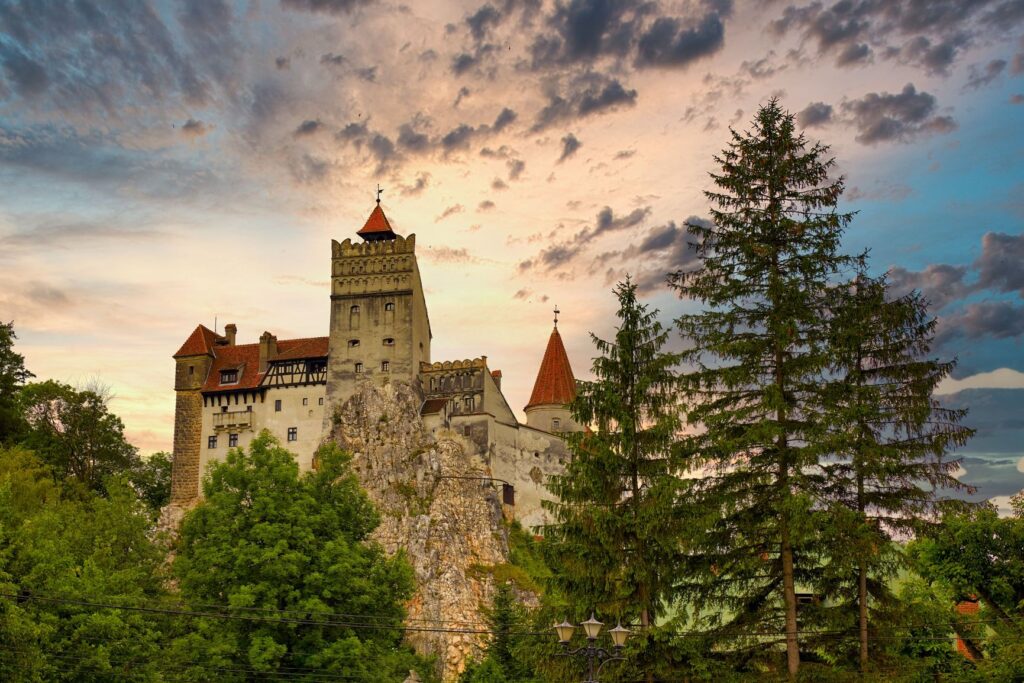Between film, television, and literature, vampires are rampant in pop culture today. But before the days of Edward Cullen and Buffy, there was one vampire who reigned supreme: Count Dracula. Since Bram Stoker’s Dracula was published in 1897, the story has been remade in media because of its ability to strike fear in the masses. But did you know that Count Dracula is not so fictional after all? He was inspired by one of the best-known Romanian historical figures, Vlad Dracula, nicknamed “Vlad the Impaler” who ruled Wallachia between 1456 and 1462. That being said, it’s not surprising that locations cited in Dracula are real, particularly in the Transylvania region of Romania. If you’re a horror story aficionado, here are several places in Romania where travelers can learn about the life of Dracula.

Photo by Dorothea OLDANI on Unsplash
1. Bran Castle
Bran Castle is perhaps the most famous Dracula location and is now one of the most respected national landmarks in Romania. The fortress is situated on the border between Transylvania and Wallachia. Stoker chose Bran Castle as the fictional home of Count Dracula, which is commonly referred to as “Dracula’s Castle,” along with Poenari Fortress. The castle is now a museum open to tourists, displaying art and furniture collected by Romania’s Queen Marie. At the bottom of the hill, a small open air museum park is also open to the public.
2. Poenari Fortress
Considered to be the real castle of Dracula, Poenari Fortress is located on a cliff in the village of the Arefu commune. It was built at the turn of the 13th century by the rulers of Wallachia and in the 15th century it was made a primary fortress by Vlad the Impaler. After his death, the castle was abandoned and has been in ruin ever since. Although it is visited by travelers and locals alike, it is no small feat—to reach the castle, visitors need to climb 1,480 steps!
3. Sighisoara
Dating back to the 6th century B.C., Sighisoara is a small city in Transylvania and still stands as one of the most beautiful medieval towns in Europe. Designated as a UNESCO World Heritage Site, Sighisoara is the spitting image of its 16th century self, complete with towers, cobbled streets, and ornate churches similar to that of Prague and Vienna. Vlad the Impaler and Count Dracula were both born here, making it the best place to begin when exploring Transylvania.
4. Old Princely Court
Located in Bucharest, Romania’s capital city, Old Princely Court is right in the center of town. Also called Curtea Veche, it was built as a place of residence for Vlad the Impaler and now operates as a museum. Since its renovation, Old Princely Court has inspired further restoration in Bucharest and has also been the heart of trade and commerce for the city.
5. Snagov Monastery
Allegedly, Vlad Dracula’s remains are buried here. Located on Snagov Island near Bucharest, the monastery is surrounded by a small commune. The commune is composed of a few small villages that epitomize medieval European towns. Archaeologists have confirmed the area’s human presence since 400 BC.
—
Want more creepy historical landmarks? Read here about the world’s most haunted castles.
Editor’s note (2021): This piece has been updated for clarity, accuracy, and relevance.
Related articles
